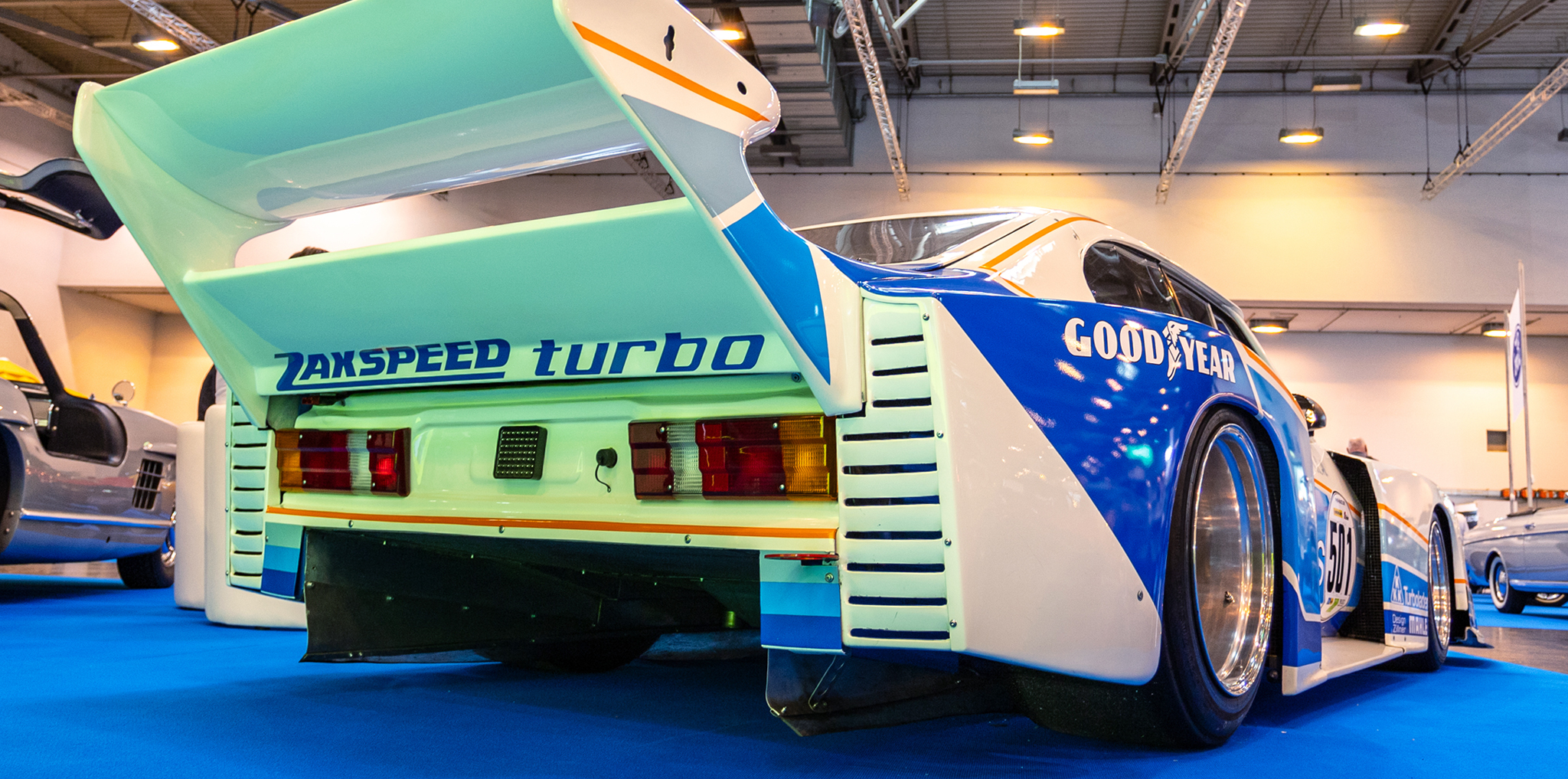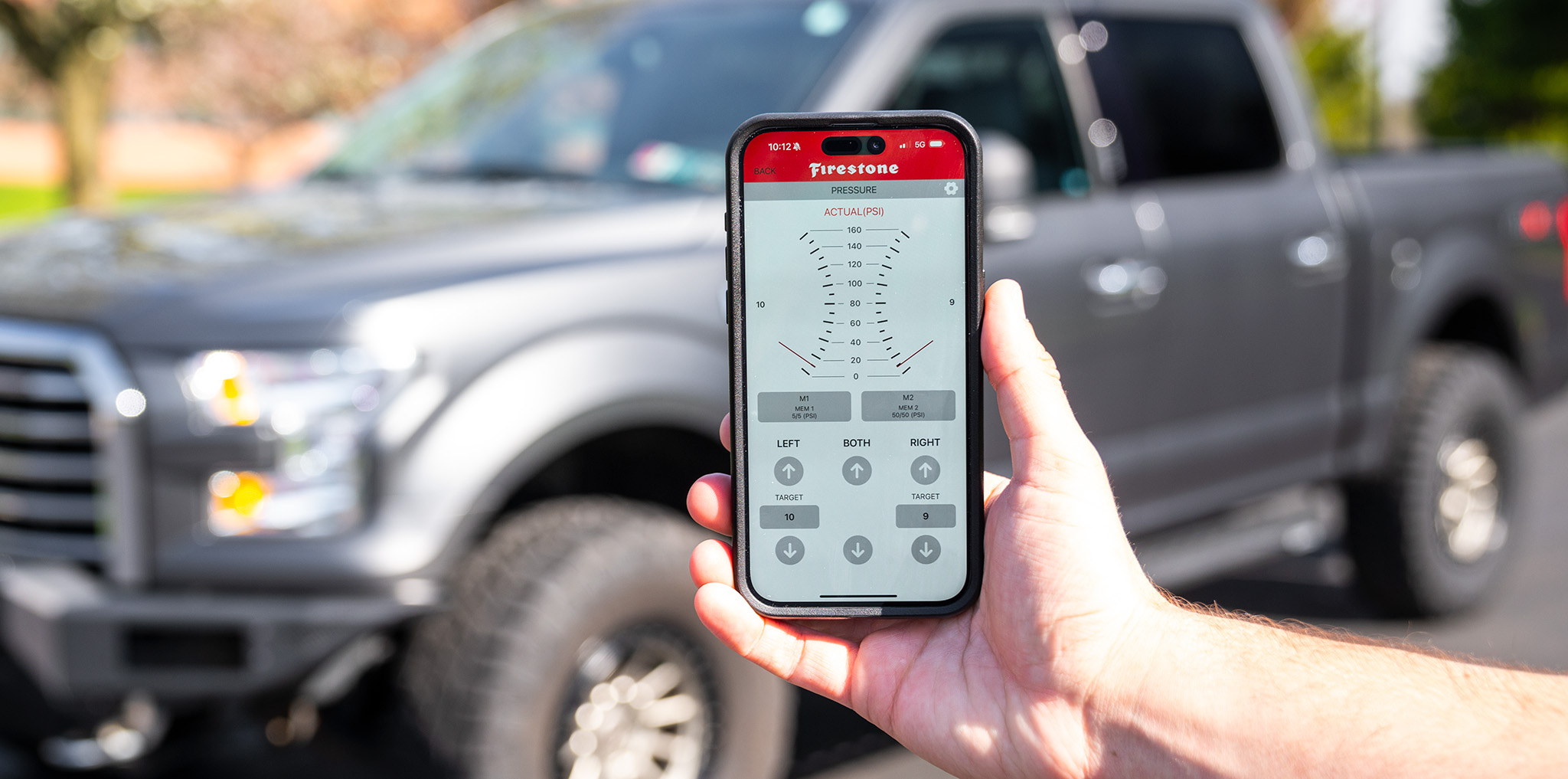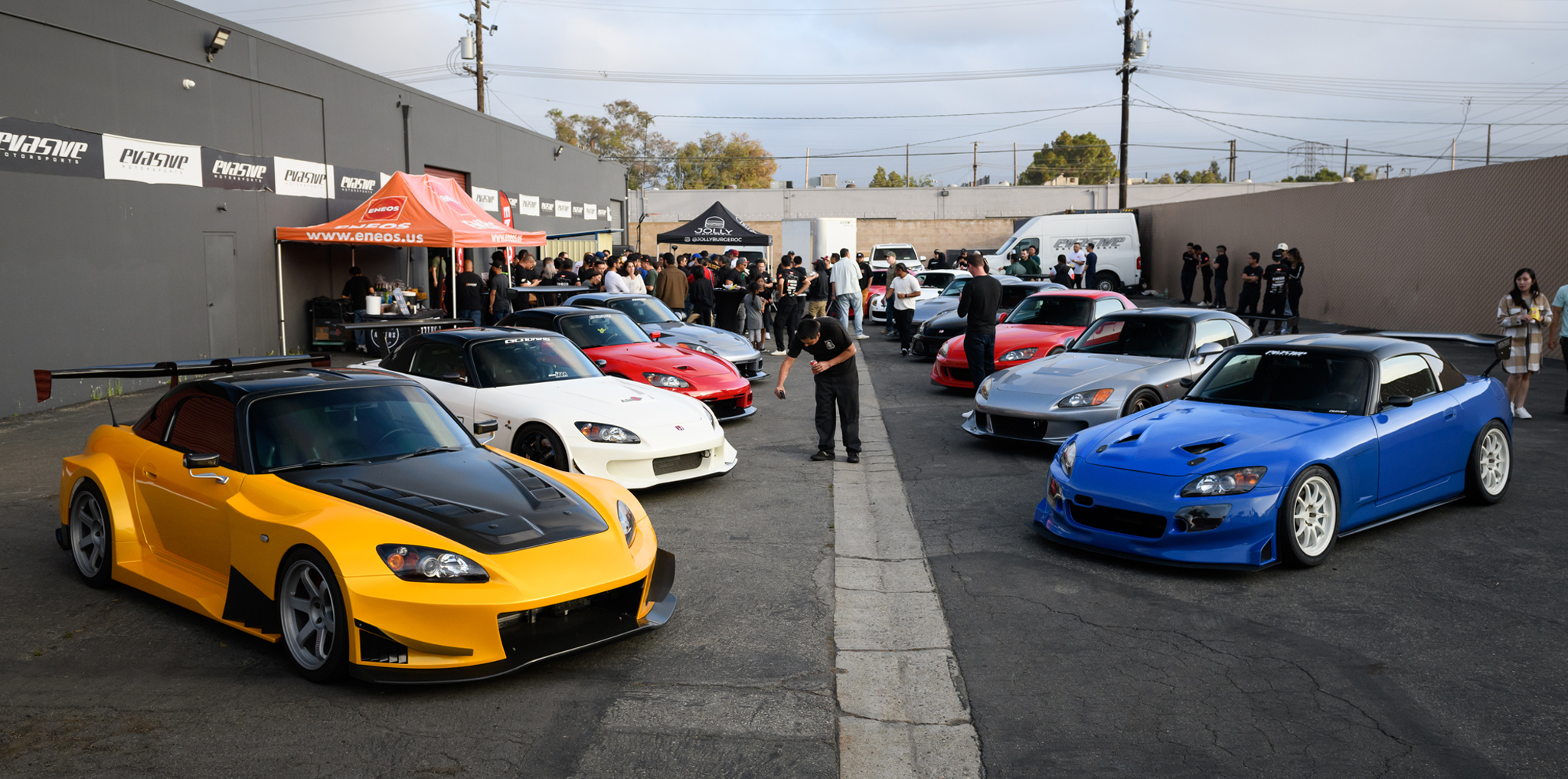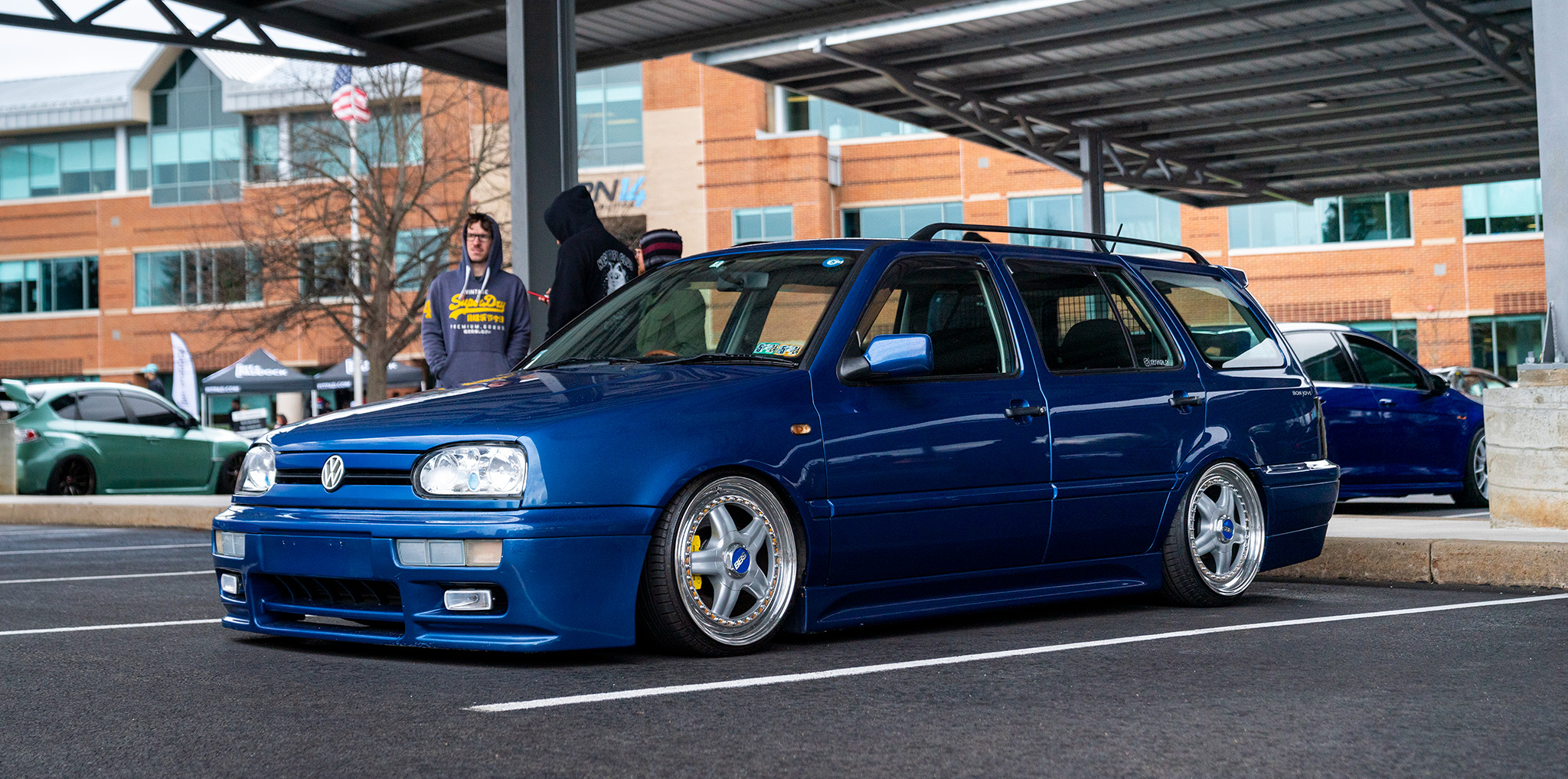- Techno-Classica is a modern showcase of old-school, automotive history inside the Messe Essen exhibition center in Germany.
- This was the show’s 34th straight year running and helped reiterate that the interest in and preservation of automotive history was stronger than ever.
- The four-day classic and collector car show welcomed over 2,700 cars, more than 1,100 exhibitors, hundreds of international spectators, and dozens of manufacturer club displays.
- Amongst the halls of motorsport fame, there was plenty of automotive lore that our readers should know about.
For as fixed as history may seem, the Techno-Classica, a show that celebrates classic cars in Germany every year, has evolved tremendously since its inception 34 years ago. This year’s change was marked by a departure: Mercedes-Benz followed BMW and VAG group’s lead and opted out of its official display footprint and left its show representation to the myriad Mercedes-Benz clubs within Germany’s bounds. This shift undoubtedly shaped the show compared to our last visit, relegating the grand museum pieces to the domains of the big three’s museums. A real shame for us visitors, indeed.
But don’t think for a second that the show floor lacked spectacle. Amidst the myriad of clubs, Techno-Classica is a store of gems, both from the machinery we admire to the plethora of traders who have further evolved the show into an opportunity to collect. While big marques have moved out, restoration houses have moved in; Rosier Classic Sterne, The Gallery, and Gassmann, all specializing in the treasures of yesteryears, put a brand new stamp on the show and a fresh variety of things to admire.
EXOTIC FARE
You know it’s a crazy show when exotic cars—like a Ferrari F40—aren’t always the main draw. Still, there are always a handful that are worth mentioning. This year, two Lamborghinis stood out from the pack, while a relative newcomer to the supercar world also showcased a four-figure horsepower, bare carbon special.
Lamborghini Diablo GT. The Lamborghini Diablo GT is a legend among supercars, marking a pinnacle in the evolution of the Diablo series. With its GT2-derived V12 engine, capable of producing 575hp, the Diablo GT offers breathtaking performance and a top speed of over 330km/h. This masterpiece of engineering is not only extremely powerful but also extremely rare; only 80 units were ever produced. I was fortunate enough to drive one a short distance at SEMA last year and can attest to the car’s incredible presence. My goodness, does it look amazing in Yellow.
Lamborghini Miura S. Parked next to a tantalizing Carrera GT, this Miura S is a matching numbers car, boasting a lineage of four owners from new, and just one of 114 late production examples ever made. This beauty (production number 561), was originally dispatched on November 6, 1970, and was packed with unique enhancements, including ventilated brake discs and a reinforced body tub. Painted in the elegant Argento Indianapolis hue, with an interior adorned in a combination of Nero Leatherette and blue fabric, it’s a sharp contrast to the yellow Diablo GT above. Legend has it that this marvel was the first of three cars sold fresh off the lot by Algerian dealer Mataam.
Koenigsegg CCXR Special Editon. As if a Koenigsegg isn’t special enough on its own, they decided to send the CCXR off with a bang by creating a “Special Edition.” This variant was crafted in exposed carbon fiber and featured a revamped aerodynamic package—a dual spoiler, a distinctive front splitter with side winglets, and top-mounted wheel vents. Additionally, this model introduced an F1-style paddle shift system. Numbers are earth-shattering: 1018bhp on e85 and 1060nm of torque, all from a 4.7-liter powerplant.
SILVER ARROWS
All of us who thought we’d have nearly infinite time to park a 190E Cosworth in our garage have been stricken by a harsh reality: people finally stopped to take notice. Indeed, vintage Mercedes is all the rage today after, undeservingly, being overlooked by other marques. Still, Mercedes’ history is undeniably one of the proudest and although the marque had officially pulled out of Techno-Classica, the Silver Arrows clubs more than made up for the missing footprint.
Mercedes-Benz 190 E 2.5-16v EVO II W201. This is one car that seems to garner more attention each year. This is number 23 out of 502, but it’s even more unique than the other 501 cars made because it’s a whopping 300kg lighter than a standard 190 E 2.5-16v EVO II. Transformed into a true track tool, it features a fully stripped interior, two racing bucket seats, a roll cage, and race configuration, while retaining the original engine setting. Thanks to the stripped interior, this EVO II now weighs in at just 1030kg. What’s even better is that it comes with a road-legal license plate. Appropriately, the ex-Manfred Schurti, 1984 Nürburgring Race of Champions 1984 Mercedes-Benz 190E 2.3-16V sat right next to it.
Mercedes-Benz 300 SEL 6.3 “Rote Sau” (Reissue). In 1971 AMG took a battered W109 as the foundation, handcrafted an engine, and paired it with a ZF five-speed gearbox. The result was this: the Mercedes-Benz 300 SEL 6.3 “Rote Sau”. At the 24-hour race in Spa-Francorchamps in 1971, piloted by drivers Hans Heyer and Clemens Schickentanz, the AMG clinched a class victory and secured second place overall. In the mid-’70s, AMG sold the original vehicle to the French defense conglomerate, Metra, where it served for many years as a test vehicle for aircraft tires. By the late ’80s, it was retired from service and scrapped in 1991. It wasn’t until the early 2000s that Mercedes-Benz AMG reconstructed a replica based on the original documents. The official recreation of the legendary “Red Pig” can be admired at the Mercedes-Benz Museum.
Mercedes-Benz 450 SE “Rammbock”. Sometimes vehicles look so weird you have to take a closer look. This oddity was a test bed for Mercedes-Benz’s next-generation V8 M117 engines. Typically, vehicles are scrapped after such trials, and this specimen was destined for the same fate; however, it instead made its way to the Traffic Safety Association in Germany where it was utilized for training purposes. Special protection vehicle drivers and VIP chauffeurs from the US Army honed their skills in breaching roadblocks using this vehicle. Remarkably, it endured over 500 ramming tests. The unique “Rammbock” modifications—with substructure and painted guardrail—were carried out at the Mercedes Benz factory.
BAVARIAN CREME
People may look at the XM today and think that BMW has, unnecessarily, created a super SUV that only marginally exceeds the brand’s standard M fare. I’ll wager that this sentiment is temporary; BMW has consistently tried to create super versions of its lineup for decades and the XM’s official production—by contrast to the standout here—is proof that the brand is as hellbent as ever to push its own envelope.
BMW 750iL V16 “Goldfish”. As I strolled past, this car caught my eye for one simple reason: its sheer enormity. On my second lap around the showroom floor, the hood was flung open, revealing yet another remarkable feature: a monstrous V16 6.6-liter engine. This project kicked off in the late ’80s with a grand vision: to create a sedan that would tower over even the mighty 7-Series. Enter Boyke Boyer, the design maestro behind the BMW E36 3-Series, tasked with sculpting this automotive colossus. The V16 engine was bespoke, a prototype born from the DNA of the existing M70 V12 found in the E32 7-Series. Sadly, despite its promise, this car never ventured beyond the realms of concept, but it’s been a mainstay feature at Techno-Classica for years.
STUTTGART SYMPHONY
If you were wondering whether the Porsche craze was just as intense in Europe as it is in the United States, it is…and then some. That said, it was a surprise to see a stateside legend in the show: the CSF 911 was front and center at Techno-Classica and showed all of the Stuttgart faithful another unique remix of the classic, air-cooled 911. Still, two cars stuck out during my walkthrough, both from very different eras of Porsche motorsport history.
Porsche 992 GT2 Manthey Heritage Edition. Porsche Motorsport celebrated the 25th anniversary of Manthey-Racing GmbH with an extraordinary special edition model. With a production run of just 30 cars, the 911 GT2 RS Clubsport 25 was designed and developed by Porsche and Manthey for track days and circuit racing. It definitely looked the part.
Porsche Roock Racing GT2. This is one of just six 911 GT2 Evolutions constructed by Roock Racing. It used a lightweight and reinforced monocoque chassis supplied by Porsche and finished 1st in the GT2 class at the 1999 24 Hours of Daytona. The Daytona-winner driver, Hubert Haupt, ended up buying this exact car after it retired from racing and is personally listing it for sale now on RM Sotheby.
GOING THE DISTANCE
The two Porsches I just mentioned were a perfect transition into these racing specials. Again, like most cars at this show, they are nearly polar opposites from very different periods. But their through line is this: they both went wheel-to-wheel with their competitors in, arguably, the most notorious series’ of their time.
Ford Capri Turbo Zakspeed. Behold, a relic from early 80s motorsport: the Deutsche Rennsportmeisterschaft Group 5, circa 1979 to 1981. Herbert Stenger piloted this wild-looking machine through the European Hill Climb Championship in 1982. By 1983, it had transformed into a Group 6 car and dominated its competition. As Stenger bowed out of the hill climb scene, the car found itself on display at the Technik Museum Speyer, a silent witness to its glorious past. In 2018, the car started a new chapter. Heinz Schmersal acquired the Capri and entrusted it to Rüddel Racing for a complete refurbishment. As you see it here, it’s been fully restored to its original Group 5 roots.
Fiat 1100 Sport “Gobbone”. This Fiat 1100 Sport nicknamed “Gobbone” had raced in the Mille Miglia—a race that literally means a thousand miles—in ’53, ’54, and ’55. The original route ran from Brescia to Rome and back, but due to safety concerns and multiple fatal accidents, the race was discontinued in 1957. Like the Capri, the race was resurgent in 1977 and continues running today, but there’s a catch: you can just sign up for the race. You must own a car (or equivalent model) that participated in the Mille Miglia from 1927-1957. So, if you buy this Fiat 1100 for €485,000, you’re immediately eligible to participate. For many, that’s a price worth paying.
YOUR TURN
Admittedly, narrowing this list down to ten was a chore. Techno-Classica is, far and away, one of the most diverse classic car shows on the planet and its mission is something I’ve always admired. If you have the privilege to attend, it’s well worth the stop. Just be sure you budget the time to admire every inch of the Messe footprint so you don’t miss a thing.



































































































